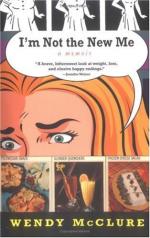One of the plates from the “Disasters of War” where the grotesque and huge figure of Death appears to the combatants.]
On arriving home Goya was given employment in designing a series of tapestries for the royal palace; and from 1780, when he was made a member of the Spanish Royal Academy, ensues the period of his greatest artistic activity. Carrying into his art the same excess of temperament which marked his life, his execution was rapid and decisive. Rebellious to the ordinary means employed by painters, he used various mediums, some of which have ill withstood the ravages of time; and, disdaining brushes, he often employed sponges or bits of rag in their place. In the case of one of his pictures, a revolt of the Madrilenians against the French, it is said that he employed a spoon.
In 1799 Goya was made painter to the king, Charles III., whose successor, the fourth of his name, continued his favor. The time, which was that of the notorious “Prince of Peace,” Godoy, was favorable for a character like that of Goya, whose eccentricities were looked upon with an indulgent eye by a court which must have felt that its function was hardly that of moral censor. At least Goya, the intimate of Maria Louisa and the court circle, by no means abandoned his friends the bull-fighters and tavern-keepers. Fresh from an altar-piece for a cathedral, or a royal portrait, his ready brush found employment in rapidly painting a street scene, or even a sign for a wine-shop. A whitewashed wall for canvas and mud from the gutter for pigment, were the means employed to embody a patriotic theme at the entrance of the French soldiers into Madrid—a popular masterpiece executed to the plaudits of the crowd.
All this would seem to denote a charlatan; yet withal, Goya has fairly won his place amid the great painters of the world. Perhaps no better example could be found of the essential difference between the outward and visible actions of a man and the inward and spiritual grace of an artist than in this instance; and the Latin standpoint, always more intellectually liberal than our own Anglo-Saxon appreciation of the same problem furnishes the reason why Goya was left free to pursue his artistic career instead of languishing in prison. His illogical brush filled the cathedrals of Saragossa, Seville, Toledo, and Valencia with masterly frescoes, while with the etching needle he produced many plates. Some of these, like the “Caprices,” a series of eighty etchings, are filled with imagination alternately tragical and grotesque; while another series, representing bull-fights, throughout its thirty-three plates depicts the incidents of the game with intense realism. The “Disasters of War,” another series of eighty, were inspired by the French invasion; and never, perhaps, were the cruelties of war more strenuously realized in art than in these. Probably these etchings, executed, like all his works, by methods peculiar to himself, constitute his best title to remembrance. But his painting, replete though it be with the defects of his qualities, stands as a precursor of the great coloristic school of which Delacroix was the head and front. This is notably to be felt in his portraits, and in some of the rapidly executed single figures of which the Louvre has a specimen and the Metropolitan Museum, New York, another—the latter, “A Jewess of Tangiers.”




